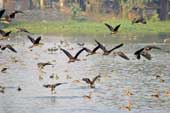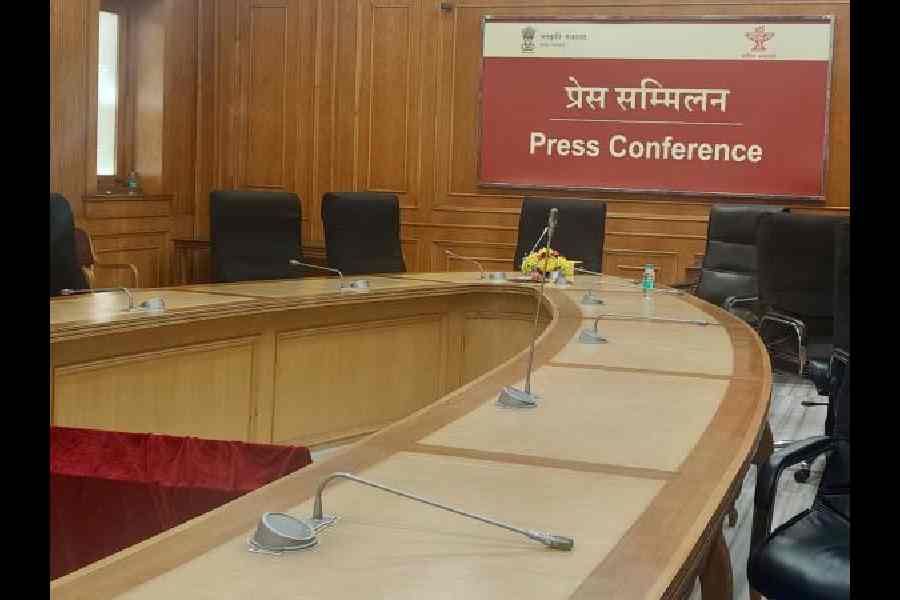 |
| A flock of Lesser Whistling Teals takes flight at Santragachhi jheel. Picture by Sanat Kumar Sinha |
Northern Shovellers, Little Cormorants and Common Moorhens made Saumabha Bhattacharya’s weekend. The second-year zoology student spent Saturday and Sunday morning at Santragachhi jheel watching the birds at a programme organised by Prakriti Samsad.
It was the Tollygunge-based wildlife society’s fourth annual birdwatch at the jheel. The members mounted two telescopes and handed out binoculars, books, charts and a checklist of the feathered species usually seen at the water body to participants.
“After the zoo stopped attracting migratory birds, Santragachhi jheel is one of the last few places near Calcutta where you can watch them,” said 19-year-old Saumabha after his second birdwatch at Santragachhi.
Situated near Santragachhi railway station in Howrah, the jheel is an unlikely haven for birds from northern Europe like Gadwall and Northern Shoveller. “It serves as a roosting site, providing a secure area for birds to rest. The local people have played an important part in the water body’s conservation,” explained Kushal Mookherjee of Prakriti Samsad.
Santragachhi jheel is owned by South Eastern Railway, which has declared it an “important urban wetland” for migratory birds. The water body is also looked after by the wildlife wing of the West Bengal Forest Directorate. Prakriti Samsad collects data for the Asian Waterfowl Census, conducted by Wetland International, from the jheel.
“Two kinds of migrants come here: birds like pochard that rest and feed in the lake, and birds like Northern Pintail that rest and fly off at night to feed elsewhere,” explained Supriyo Samanta, another member of Prakriti Samsad.
“This year, we sighted 4,720 Lesser Whistling Teals, a significant increase from last year and the highest in recent years. We also counted 35 Common Teals, not seen in such large numbers here,” added Samanta.
The birds come in the migratory season, which extends from September to March. During this time, the hyacinth-clogged jheel is cleaned up by the forest department. Local residents like Nirmal Saha said the birding season is the only time the forest department remembers the jheel.











